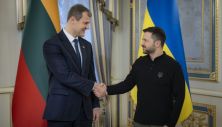The European Union plans to move away from the current model of financing military support for Ukraine through the European Peace Facility, partly due to Hungary’s repeated vetoes.
According to RMF24, citing its sources, EU ambassadors are expected to reach a political agreement next Wednesday on the terms of providing Ukraine with a portion of a €50 billion loan, using revenues from frozen Russian assets.
The EU’s contribution will be part of a G7 loan, with the EU planning to provide up to €35 billion. The draft decision indicates that a significant portion of the funds will go to programs financed by the EU budget, with only 5% directed to the European Peace Facility, which compensates EU member states for the military aid they provide to Ukraine. A majority vote will be sufficient to pass this decision, preventing Hungary from using its veto.
Hungary’s ongoing obstructions are one of the reasons the EU plans to reduce the role of the European Peace Facility as the main instrument for military support to Ukraine.
Until now, around 90% of the income from frozen Russian central bank assets was allocated to supporting Ukraine through the Peace Facility. The EU agreed on this approach in June, bypassing Hungary’s opposition, and transferred the first tranche a month later.
EU High Representative Josep Borrell mentioned that, in addition to the first tranche, another €1 billion is expected to be allocated by the end of the year to support Ukraine in the same manner.
Read also: Norway to allocate NOK 250M for Norfund’s investments in Ukraine













